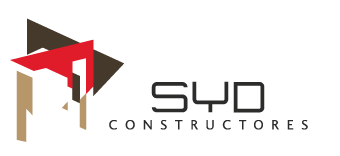It applies only to receivables that can’t be collected, and bad debts can only be written off if the company or the organization cannot collect them. Over time since an invoice was written off, a customer may unexpectedly pay an invoice. In such a case, the process is reversed, and accounts receivable are reinstated to be treated like a normal debtor collection.
How to write off doubtful accounts?
In contrast, the credit side of the journal entry creates a contra account to adjust the overstated debtor in the form of uncollectible assets. The debit impact of the above-given journal entry is the recording of the expense in the income stated that leads to a reduction in the profitability. So, the allowance method allows organizations to create a general reserve for bad debt that can be used when the business needs to write off specific balances. The raw materials for bread include flour, yeast, water, salt, and any additional ingredients like sugar or butter. To calculate the required raw materials, the bakery must first understand the recipe and how much of each ingredient is needed to produce one loaf. This guarantees more accurate bad debt estimations and helps companies to sell distressed accounts swiftly.
Implementing the Allowance Method requires careful consideration and analysis of past data, industry trends, and customer payment patterns. It involves estimating the percentage of receivables that are unlikely to be collected and recording them as a provision for bad debts. This provision is then used to offset the accounts receivable balance, resulting in a more accurate representation of the company’s financial position. The allowance method records an estimate of bad debt expense in the same accounting period as the sale. The allowance method follows the matching principle, which states revenues need to be matched with the expenses incurred in that same accounting period. Another disadvantage is that the balance sheet is not an accurate representation of the company’s accounts receivable.
When it comes to business longevity, consistent cash flow, effective inventory management, and proper… On the other hand, writing off through the allowance method helps to locate the creation of provision, use of the provision, reversal, etc. From a control perspective, the use of the direct method can be a little risky, it’s because if there are no sound controls manager might write off balances in a personal capacity.
- During the next year, ABC Company identifies a specific customer account with a balance of $2,000 as uncollectible.
- And with this, the total amount of uncollectable accounts appears in the reserve account for financial reporting purposes.
- The debit impact of this journal entry is the same as in the case of the indirect method.
- It also ensures that expenses related to bad debts are recognized in the same period as the revenue generated from those accounts.
- So, any provision in the accounting record is added back to calculate the taxable income.
Bad Debts Expense as a Percent of Sales
Automation can streamline credit management processes, enabling faster identification of overdue accounts. AI can analyze customer payment patterns and predict which accounts are likely to become doubtful, allowing for proactive intervention. When an account is determined to be uncollectible, you debit the Allowance for Doubtful Accounts and credit Accounts Receivable.
When it comes to the direct write-off method, all the bad debts of the organizations are charged to the expense account. An allowance account is a contra account for the assets; the amount is recorded in this contra account to offset overstated debtors that the business cannot collect. Moreover, the following treatment is made to record the bad debt expense under the direct method.
- In food production, raw materials are just the main ingredients used to make the final product.
- It allows businesses to anticipate and prepare for uncollectible accounts before they become a financial burden.
- The company needs to source 1,575 meters of fabric to meet its production target while minimizing shortages.
- This guarantees more accurate bad debt estimations and helps companies to sell distressed accounts swiftly.
- Every industry, from food to construction, relies on the right raw materials for success.
Explore the allowance method’s strategic approach to managing uncollectible accounts with insights into historical data’s impact on financial reporting. To record an allowance for doubtful accounts journal entry, you typically make an adjusting entry at the end of an accounting period. This entry recognizes the estimated amount of uncollectible accounts and adjusts the balance of the allowance for doubtful accounts. Doubtful accounts, also known as bad debt or uncollectible accounts, are accounts receivable that a company believes it may not collect in full or at all. It’s an estimate of the portion of accounts receivable that is expected to become potential losses. A doubtful account, also known as a bad debt or uncollectible account, is an account receivable that a company has justifiable reason to believe it may not collect the full credit balance or at all.
In food production, raw materials are just the main ingredients used to make the final product. Figuring out how much you need depends on things like the recipe, how much you’re making, and how much gets wasted. Businesses have their own ways of figuring out raw material costs to stay efficient and keep expenses in check. Proper processing turns raw materials into functional components for various industries, from construction to consumer goods. Natural raw materials are resources found in nature and used without extensive processing.
Example 2 – Determining Raw Materials for Food Production
Once it’s identified which parties won’t be paying, the allowance and their balance are removed from the books. However, excess allowance creation can significantly reduce the accounting profit, which can also be questioned. Sometimes, the direct write-off for the account balance does not seem logical as the business may be unable to locate which debtor should be written off. This method applies to various industries, ensuring smooth production and cost efficiency. Discover best dispute reasons for collections on your credit report – obsolete debt, incorrect info, identity theft, and more. Let us look at the examples of the allowance method to understand the concept better.
As a result, its November income statement will be matching $2,400 of bad debts expense with the credit sales of $800,000. If the balance in Accounts Receivable is $800,000 as of November 30, the corporation will report Accounts Receivable (net) of $797,600. When a business writes off an uncollectible account, it charges the amount as a bad debt expense on the income statement. With the direct write-off method, this expense might occur in a period after the initial sale was recorded, which violates the matching principle of generally accepted accounting principles, or GAAP. Consequently, stakeholders gain a clearer understanding of a company’s actual financial position, aiding in informed decision-making, prudent financial planning, and effective risk management.
Inventory Accounting Essentials: Managing and Recording Inventory Transactions
Getting them the right way helps keep things high-quality, eco-friendly, and budget-friendly. Making synthetic materials helps keep up with high demand and offers a budget-friendly alternative to natural ones. But, to protect the environment, it’s important to focus on sustainable production and recycling. They are unprocessed or minimally processed materials that serve as the foundation for production in various industries. After discussing the estimation process, let’s examine the journal entries used in the allowance approach.
However, it is not without its limitations, as estimation challenges and reliance on historical data can impact the accuracy of provisions for bad debts. Recording the recovery of bad debts is essential for maintaining accurate financial records. By properly recording these recoveries, businesses the allowance method definition reflect the receipt of payment and adjust their financial statements to reflect the change in the accounts receivable balance.
In the following month, $20,000 of the accounts receivable are written off, leaving $10,000 of the reserve still available for additional write-offs. More and more businesses and consumers are focusing on sustainable sourcing of raw materials. Companies that go green not only shrink their environmental impact but also appeal to eco-conscious customers. Accurate raw material calculations are essential for efficient production and cost management. Several factors impact how businesses determine the right quantity of raw materials needed.
If so, the account Provision for Bad Debts is a contra asset account (an asset account with a credit balance). Under the allowance method of accounting for bad debts, an estimate is made of the accounts receivable that will be written off and that amount is charged to bad debts expense for the period. The allowance method is GAAP because it matches the bad debts expense to the sales revenue that generated it. The Allowance Method in accounting sets aside funds to cover anticipated bad debts from credit sales. It calculates a reserve based on past sales and customer risk assessment, ensuring a realistic reflection of expected uncollectible amounts in financial statements.
It ensures that the balance sheet reflects a realistic picture of the company’s assets and helps prevent overstatement of income. The reserve is created opposite to the assets to record the amount required for doubtful debtors. Later, the allowance for doubtful accounts is used instead of bad debt expense to offset losses resulting from nonpayment from customers. The allowance method estimates the portion of accounts receivable that may not be collected.

